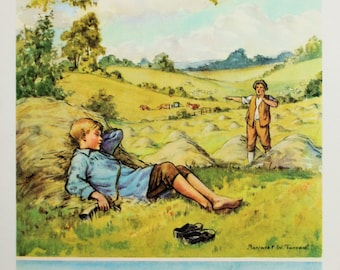
I just thought I would post some pics of how we in Tirau have commemorated this special day.
A service is held in the Town Hall and had a lot of people from our church participating in it. I have been going to them most years since arriving in Tirau, 30 years ago and was saddened to note that there was only one RSA member left from those first days.
The service started with Mrs Nora Martelletti, a long standing member of the Tirau Community Board welcoming and introducing our new minister Rev John Rush.
A message from the Governor-General of New Zealand Lt.Gen The Rt Hon Sir Jerry Mateparae GNZM, GSO, was read out by a local RSA member, Clive Collingwood.
Like most services throughout New Zealand we all then stood while the bringing in and presentation of colours (the New Zealand and British flags) by members of local RSA War Veterans takes place and are stood next to the Roll of Honour.
We all then sung God Save the Queen.
Then members of organisations are invited to bring in their wreaths which are placed at the foot of the Roll of Honour.
Prayers were then said and a reading from Psalm 100 with a response per line by the congregation.

 Amazing Grace was sung and the Lord ’s Prayer said.
Amazing Grace was sung and the Lord ’s Prayer said. Then two members of our Churches youth group read lessons from Ecclesiastes 3:1-8 and John 15:9-13, with all people saying Psalm 23 a Psalm said by many a soldier in his final hours.
Then two members of our Churches youth group read lessons from Ecclesiastes 3:1-8 and John 15:9-13, with all people saying Psalm 23 a Psalm said by many a soldier in his final hours.A member of our Parish, Mary Tidbury, told the story of her family connection to Melville Mirfin. who was one of the first men to volunteer for World War 1 in 1914. He is featured on a special stamp issued to commemorate King and Empire. He served from 1914 through to the occupation of Germany in 1919 and became one of the longest serving soldiers of WW1.
We listened to a recording of “Sons of Gallipoli" composed and sung by Fr Chris Skinner from the disc entitled “You Raise Me Up.
The message from the Prime Minister of New Zealand Rt John Key was read by Cassandra Robinson, Chairwoman of the Tirau Community Board.
 We all stood for the singing of the National Anthem of New Zealand and then a Dedication was said by Rev John Rush.
We all stood for the singing of the National Anthem of New Zealand and then a Dedication was said by Rev John Rush.As we sung a last song Let There Be Peace an offering was taken up for the RSA Welfare Programmes.
Then the bit that always gets me is the playing of the Last Post and the Reveille with the reciting by of us all
They shall not grow old,
As we that are left grow old.
Age shall not weary them.
Nor the years condemn.
At the going down of the sun,
And in the morning,
We will remember them;
We will remember them.
The service is closed with the Benediction and the retiring of the colours.


All the wreaths are taken to the Tirau Cemetery and placed at the foot of the flag pole in the RSA section and a single poppy is laid on the graves of RSA members buried there.











































